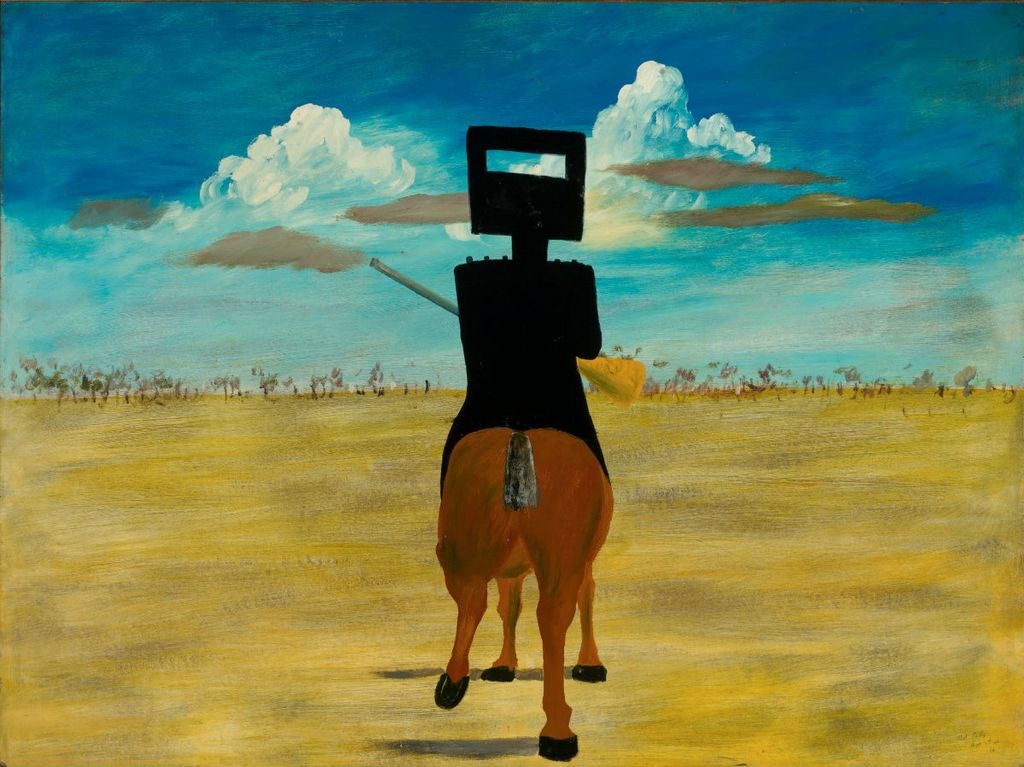Australia
21 Sep - 08 Dec 2013
AUSTRALIA
21 September — 8 December 2013
The story of Australia is inextricably linked to its landscape, providing a rich seam of inspiration for Australian artists for centuries.
Marking the first major survey of Australian art in the UK for 50 years, this exhibition spans more than 200 years from 1800 to the present day and seeks to uncover the fascinating social and cultural evolution of a nation through its art.
Two hundred works including painting, drawing, photography, watercolours and multimedia shed light on a period of rapid and intense change; from the impact of colonisation on an indigenous people, to the pioneering nation building of the 19th century through to the enterprising urbanisation of the last 100 years.
To mount this ambitious exhibition, works have been drawn from some of the most important public collections in Australia, many of which have never been seen in the UK before. Reflecting the vastness of the land and the diversity of its people, early as well as contemporary Aboriginal art sits alongside the work of the early colonial settlers, immigrant artists of the 20th century and the work of some of today’s most established Australian artists.
An introduction to ‘Australia’ by Antony Gormley RA
The Red Continent comes to the heart of London. Modernist landscape, which became somewhat bleached out in St Ives, took root, became original and hardened in the desert of Australia.
When I think of Sidney Nolan, Fred Williams or Arthur Boyd, I think of harsh earth and fierce sunlight. Through its new occupiers, somehow Australia produced modernist vigour. Burke and Wills’ 1860 expedition across the centre of the continent left few survivors, and likewise, the European picturesque (although this exhibition contains a few examples) withered in the heat.
The works of the Indigenous Australians like those of Rover Thomas and Emily Kame Kngwarreye show the land speaking in the dream mapping of its original inhabitants. While artists from a deracinated European tradition continue to make pictures, the native Australian maps the experience of being the land and allows it to move through him or her. There is a directness in the Indigenous traditions, whether the dots of the Western Desert or the colour field paintings of the Great Sandy Desert, where pigment is used to carry mineral truth as well as lived feeling.
Today’s artists continue this uncompromising confrontation. Shaun Gladwell treats the road as surrogate drawing. Tracey Moffatt takes complex human relations and sets them against the insistent reality of the land: no landscape, no escape.
21 September — 8 December 2013
The story of Australia is inextricably linked to its landscape, providing a rich seam of inspiration for Australian artists for centuries.
Marking the first major survey of Australian art in the UK for 50 years, this exhibition spans more than 200 years from 1800 to the present day and seeks to uncover the fascinating social and cultural evolution of a nation through its art.
Two hundred works including painting, drawing, photography, watercolours and multimedia shed light on a period of rapid and intense change; from the impact of colonisation on an indigenous people, to the pioneering nation building of the 19th century through to the enterprising urbanisation of the last 100 years.
To mount this ambitious exhibition, works have been drawn from some of the most important public collections in Australia, many of which have never been seen in the UK before. Reflecting the vastness of the land and the diversity of its people, early as well as contemporary Aboriginal art sits alongside the work of the early colonial settlers, immigrant artists of the 20th century and the work of some of today’s most established Australian artists.
An introduction to ‘Australia’ by Antony Gormley RA
The Red Continent comes to the heart of London. Modernist landscape, which became somewhat bleached out in St Ives, took root, became original and hardened in the desert of Australia.
When I think of Sidney Nolan, Fred Williams or Arthur Boyd, I think of harsh earth and fierce sunlight. Through its new occupiers, somehow Australia produced modernist vigour. Burke and Wills’ 1860 expedition across the centre of the continent left few survivors, and likewise, the European picturesque (although this exhibition contains a few examples) withered in the heat.
The works of the Indigenous Australians like those of Rover Thomas and Emily Kame Kngwarreye show the land speaking in the dream mapping of its original inhabitants. While artists from a deracinated European tradition continue to make pictures, the native Australian maps the experience of being the land and allows it to move through him or her. There is a directness in the Indigenous traditions, whether the dots of the Western Desert or the colour field paintings of the Great Sandy Desert, where pigment is used to carry mineral truth as well as lived feeling.
Today’s artists continue this uncompromising confrontation. Shaun Gladwell treats the road as surrogate drawing. Tracey Moffatt takes complex human relations and sets them against the insistent reality of the land: no landscape, no escape.

